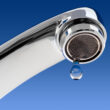WEED CONTROL/Seattle turns up the heat for grounds program
For the past several years, Seattle has put the heat on weeds. As part of a citywide effort to reduce the use of pesticides (i.e., herbicides, fungicides and insecticides), departments have experimented with devices that kill weeds by heating them to destroy their cell walls.
In 1999, Seattle set a goal of reducing its pesticide use by 30 percent. In 2000, the city, using a combination of federal and local funds, launched a three-year pilot program to explore methods of weed and pest control that do not use pesticides. Under the guidance of the city’s Office of Sustainability and Environment, Seattle Parks and Recreation, Seattle Public Utilities, Seattle Department of Transportation, Seattle City Lights and Seattle Center participated in the program.
The exploration of alternative weed-control methods focused on heating technologies, according to Barbara DeCaro, resource conservation coordinator for Seattle Parks and Recreation. Weed flaming equipment was one of the tools with which the departments experimented. Shaped like a regular weed whacker, a flame weeder is fueled by propane and takes less than a second to shoot a flame at a weed.
The departments also experimented with a radiant heater that, instead of producing a brief open flame, features a heated coil at its tip. The user places the tip on the weed. Neither the flame weeder nor the radiant heater causes the weed to burn.
“The idea behind [the flame weeder and the radiant heater] is that you are actually heating up the plant cells and breaking down plant cell walls. That in turn causes the death of the plant,” DeCaro says. “What you’re trying to do is not burn it, necessarily, but heat it up enough to boil within.”
In DeCaro’s estimation, the radiant heater has at least one advantage over the flame weeder. “The advantage to the radiant heater is that you can actually get very close to valuable plants that you don’t want to affect,” she says. “You have a little bit less control with the flame, as the heat from the end of the flame weeders goes out well beyond the flame itself.”
The city also experimented with steam heat — applied through a hose and nozzle — but it was unimpressed by the results. “[The steam heater] just wasn’t as successful,” DeCaro says. “Once [the steam and hot water are] sprayed onto a plant, they actually cool off pretty quickly.”
Heat-related measures will continue to play a role in Seattle’s weed control, DeCaro says. However, it is unclear whether the city will be able to use flame weeders. Concerned that the product’s open flame could lead to fires, the Seattle Fire Department is reviewing the use of the flame weeder. While doing so, the department is prohibiting the use of the device.



















